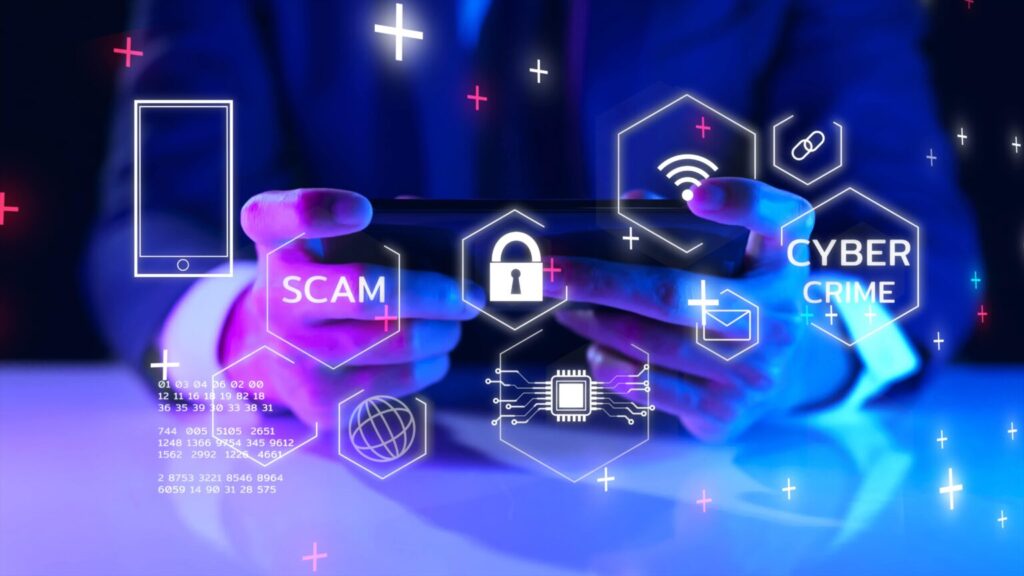In recent years, there has been a disturbing rise in cybercriminal activities where hackers leverage the names of well-known organizations to gain unauthorized access to sensitive data from unsuspecting individuals. This trend, which has seen an exponential increase in frequency and sophistication, primarily involves phishing emails, WhatsApp messages, and other forms of social media communication that are crafted by cybercriminals and spread by those who lack adequate cyber security awareness. These malicious activities are not only a threat to individual users but also pose significant risks to organizations, governments, and international institutions. This article highlights the different ways these cybercrimes are carried out, their impact and how individuals and organizations can protect themselves and secure their data calling for international cooperation in the fight against cybercrime.
The Mechanism of Deception
Cybercriminals often disguise their malicious communications to appear as though they originate from reputable international organizations such as the United Nations (UN), World Food Program (WFP), World Bank, and the International Monetary Fund (IMF). These emails, WhatsApp messages, and social media posts are designed with meticulous attention to detail, making them nearly indistinguishable from legitimate communications. Hackers utilize the logos, language, and branding of these organizations to create a false sense of security among recipients.
Once the unsuspecting user interacts with these communications—by clicking on a link, downloading an attachment, or providing personal information—they inadvertently compromise their data or allow malware to be installed on their devices. This malware can range from ransom ware, which locks users out of their systems until a ransom is paid, to spyware that silently monitors and transmits data back to the hackers. The consequences can be devastating, including financial loss, identity theft, and even breaches of national security.
The Spread of Misinformation
The distribution of these fraudulent communications is often facilitated by hackers who have already gained control of individual or organizational accounts. These compromised accounts are then used to spread malicious links and attachments across social media platforms, email lists, and messaging apps like WhatsApp. The wide reach of these platforms allows the malware to spread quickly, affecting thousands of individuals and organizations within a short period.
Moreover, the spread of misinformation is not limited to the digital realm. Hackers also exploit traditional media channels to propagate their scams. For example, false information about government programs or international aid initiatives can be broadcasted through hacked social media accounts, leading to widespread confusion and panic among the public. This not only undermines trust in legitimate institutions but also makes it increasingly difficult for individuals to discern between real and fake communications.
Protecting Against Cyber Threats
Given the growing sophistication of these cyber threats, there is an urgent need for international organizations and governments to adopt more robust measures to protect themselves and the public. One such measure is the development of secure websites and digital platforms with unique symbols or verification marks that clearly distinguish them from fake ones. These symbols could serve as a visual cue for users, helping them to quickly identify legitimate communications from trusted sources.
In addition to digital verification, there is a need for widespread public education and awareness campaigns. These campaigns should be communicated through various channels, including radio, television, and social media, to reach a broad audience. The goal is to inform the public about the latest tactics used by cybercriminals and to provide guidance on how to recognize and avoid falling victim to these scams.
Furthermore, continuous education is essential for keeping the public informed about emerging cyber threats. Governments and organizations should consider developing and distributing educational materials, such as books and online resources that provide detailed information on past and current forms of cyber-attacks. These materials should be tailored to specific regions, continents, and cities to address the unique challenges faced by different groups.
The Role of International Cooperation
The fight against cybercrime cannot be won by individual organizations or governments alone. It requires a coordinated effort on an international scale. International organizations, such as the UN, WFP, World Bank, and IMF, must work together to share information, resources, and best practices for combating cyber threats. This collaboration should extend to law enforcement agencies, who play a crucial role in tracking down and prosecuting cybercriminals.
One of the most challenging aspects of dealing with cybercrime is the fact that many cyber threats fall into one of four categories: state-sponsored cyber-attacks, ideological and political extremism, serious and organized crime, and lower-level crime. These threats are often perpetrated by loose organizations with common objectives but different motivations, making it difficult to identify a central controlling body or leader. As such, international cooperation is essential in developing strategies to address these complex and evolving threats.
In conclusion, the rise in cybercriminal activities that exploit the names of major organizations is a growing concern that requires immediate attention. By implementing stronger digital verification measures, educating the public, and fostering international cooperation, we can mitigate the risks posed by these cyber threats. Continuous training and advocacy are also crucial in combating the diverse forms of cybercrime, particularly those involving state-sponsored attacks, political extremism, and organized crime. Through these combined efforts, we can protect individuals and organizations from the ever-evolving landscape of cyber threats and ensure a safer digital environment for all.
By Jastine Otim


